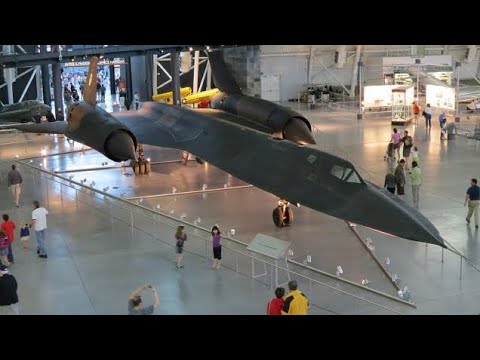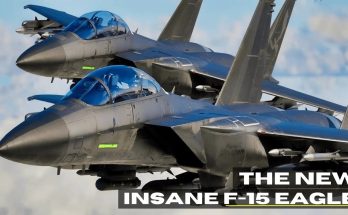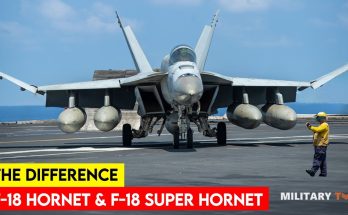NASA & USAF’s Hypersonic Fighter Jet – The 2026 SR-71 Revealed!
The SR-71 Blackbird is an iconic aircraft that continues to inspire awe and fascination decades after it was retired. Known for its speed, altitude, and cutting-edge technology, the SR-71 was the epitome of aerospace engineering during its time. However, in 2026, a new and even more advanced version of this legendary aircraft is set to be revealed — a hypersonic fighter jet developed through collaboration between NASA and the U.S. Air Force (USAF). The 2026 SR-71 will combine the unmatched legacy of the original Blackbird with revolutionary advancements in aerodynamics, propulsion, and stealth technology, making it a formidable player in modern and future warfare.
What is the 2026 SR-71?
The 2026 SR-71 is not just a revamped version of its predecessor, but a complete reimagining of the hypersonic aircraft. This new jet aims to push the boundaries of speed, stealth, and versatility, while leveraging the lessons learned from the SR-71’s operational history.
Set to be one of the world’s fastest and most technologically advanced aircraft, the 2026 SR-71 will be designed for high-speed reconnaissance, strategic strikes, and tactical missions in some of the most hostile airspace imaginable. Combining hypersonic speeds (greater than Mach 5), stealth features, and cutting-edge sensor fusion, the 2026 SR-71 is expected to redefine the concept of air superiority.
Key Features of the 2026 SR-71 Hypersonic Fighter Jet
-
Hypersonic Speeds (Mach 5 and Beyond)
The most striking feature of the 2026 SR-71 is its ability to reach hypersonic speeds. While the original SR-71 could reach speeds of Mach 3, the new iteration will fly at speeds of Mach 5 or higher, far surpassing the capabilities of modern jet fighters. These speeds will allow it to cover vast distances in a fraction of the time, making it a formidable asset for both strategic reconnaissance and rapid-response missions.
Flying at such speeds would also reduce the time for adversaries to intercept the aircraft, giving it an incredible edge in high-stakes operations where time is critical.
-
Cutting-Edge Propulsion Technology
The 2026 SR-71 will be powered by next-generation scramjet engines and dual-mode ramjet/scramjet systems that enable hypersonic flight. These advanced propulsion systems will allow the jet to operate at extreme altitudes and speeds, and importantly, at sustained hypersonic velocities.
-
Scramjets (Supersonic Combustion Ramjets) work by compressing incoming air using high-speed airflow, instead of relying on moving parts like turbines, making them more efficient at high speeds. This system will help the 2026 SR-71 achieve optimal performance, even at Mach 6 or beyond.
-
These engines will also integrate advanced fuel systems capable of handling extreme heat and stress generated by such high-speed travel.
This state-of-the-art propulsion will give the 2026 SR-71 unmatched range and speed, allowing it to execute both reconnaissance and offensive strike missions far faster than any other aircraft currently in service.
-
Enhanced Stealth Features
Although the original SR-71 was already ahead of its time in terms of stealth technology, the 2026 model will take this to a whole new level.
-
The airframe will be built using stealth materials that reduce radar cross-section (RCS) and heat signature, making it incredibly difficult for enemy radar and infrared sensors to track.
-
The aircraft’s shape will be optimized for stealth, with sharper edges, reduced surfaces that reflect radar waves, and design features that minimize the aircraft’s visibility across multiple spectrums.
-
It will also incorporate active stealth technology, using electronic systems to disrupt or confuse enemy tracking systems in real-time.
These advancements will allow the 2026 SR-71 to operate undetected in hostile airspace, making it a perfect platform for high-risk reconnaissance or surgical strikes against critical targets.
-
Advanced Avionics and Sensor Fusion
The 2026 SR-71 will feature some of the most advanced avionics and sensor fusion technologies available today, allowing the aircraft to dominate the battlespace with unparalleled situational awareness.
-
Advanced radar and infrared sensors will allow the jet to detect and engage targets at extreme distances, providing the pilot with a clear and real-time view of the operational environment, even in contested or GPS-denied regions.
-
Sensor fusion will combine data from radar, infrared systems, and electronic warfare tools to provide a seamless, integrated picture of the air and ground threats, enhancing the pilot’s ability to make decisions quickly.
-
The aircraft will be equipped with electronic warfare (EW) systems, which can jam enemy radar and disrupt communication channels, ensuring it can operate in the most heavily defended airspace.
-
Revolutionary Cockpit Design
The cockpit of the 2026 SR-71 will be designed for maximum pilot efficiency, incorporating the latest in augmented reality (AR) and hands-free control systems.
-
Heads-up displays (HUD) will give the pilot vital information without needing to take their eyes off the sky.
-
AI-assisted decision-making tools will provide recommendations on optimal flight paths, evasive maneuvers, and target engagement, assisting the pilot in making real-time decisions during high-speed operations.
-
Voice and gesture controls will allow the pilot to operate critical functions without needing to physically interact with controls, reducing workload and enhancing safety during high-speed flight.
-
Multi-Role Combat Capabilities
In addition to its reconnaissance role, the 2026 SR-71 will be a highly capable multi-role fighter jet. It will feature:
-
The ability to carry and deploy precision-guided munitions, including hypersonic missiles for long-range strikes against high-value targets.
-
Integration of air-to-air and air-to-ground weapons for offensive operations, allowing the jet to be a formidable strike platform in addition to its traditional surveillance role.
-
Precision strike capabilities, making the 2026 SR-71 useful not only for intelligence gathering but also for carrying out targeted attacks on enemy assets.
-
Extended Operational Range and Endurance
The hypersonic capabilities and advanced propulsion of the 2026 SR-71 will allow it to fly at extreme altitudes and sustain long-range missions with greater endurance. This will make the aircraft especially useful for long-duration intelligence gathering or rapid-response strikes across vast geographic regions.
Its extended range will also allow it to operate far from base, conducting global operations without the need for refueling.
The Strategic Impact of the 2026 SR-71
The 2026 SR-71 will be a game-changer in modern warfare. Its combination of hypersonic speed, advanced stealth, cutting-edge sensors, and multi-role capabilities will make it a dominant force in any theater of operations. Whether conducting high-speed reconnaissance over enemy territory, engaging in surgical strikes, or outmaneuvering advanced air defenses, the 2026 SR-71 will provide the U.S. Air Force and its allies with a critical advantage in future conflicts.
Conclusion: The Future of Air Combat
The 2026 SR-71 is poised to redefine air superiority in the 21st century. With unprecedented speed, advanced stealth, and multi-role capabilities, it will take the legendary SR-71’s legacy to new heights, ensuring that this iconic aircraft remains a force to be reckoned with. As hypersonic technology continues to evolve, the 2026 SR-71 will undoubtedly set the standard for future high-performance combat jets, ushering in a new era of air combat and reconnaissance.
As we look to the future of aerial warfare, the collaboration between NASA and the USAF in developing the 2026 SR-71 is a testament to the cutting-edge innovations that will continue to shape military aviation for decades to come.



